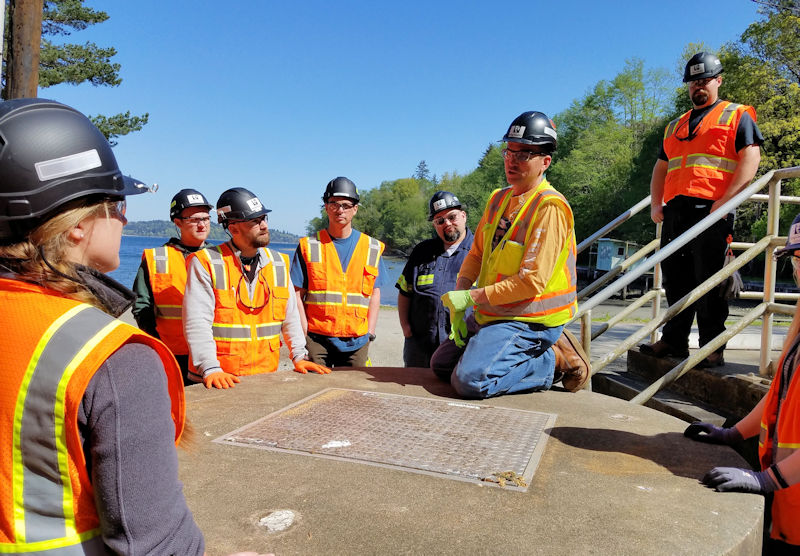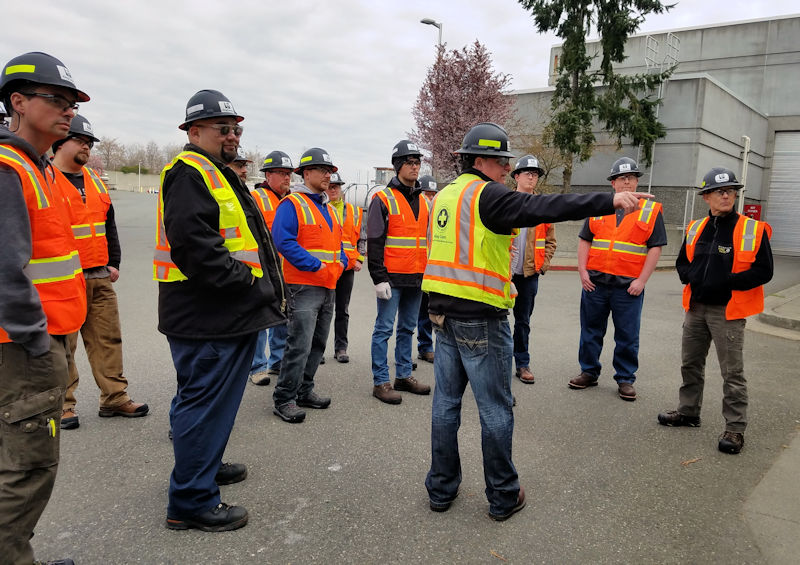
The King County (Wash.) Wastewater Treatment Division introduced an Operator in Training (OIT) program to recruit a new diverse workforce. Photo courtesy of the King County Wastewater Treatment Division.
King County, Washington is becoming more racially diverse as the growth of Asian-, Latin-, and African-American populations outpaces that of the white population, according to 2018 census data. Recognizing its changing demographics, the county is working to recruit a workforce that is fair and inclusive for all.
Two years ago, the county Wastewater Treatment Division introduced an Operator in Training (OIT) program that seeks to remove employment barriers for people of color.
“When we introduced this [OIT] program, we had two goals: making sure we had enough trained workers to fill vacancies and extending the diversity of our wastewater staff,” said Elizabeth Milestone, who manages the OIT program as part of her human resources responsibilities for the division.

John McMillin, King County safety officer, provides safety training to an Operator in Training (OIT) class. Photo courtesy of the King County Wastewater Treatment Division.
“We do a lot of community outreach with work programs and organizations that are dedicated to serving residents in disadvantaged zip codes. We also have our OIT tests professionally validated to ensure there is no unintentional bias,” Milestone said.
Since launching the training program, the division has adjusted recruiting efforts as staff learned about the challenges, needs, and preferences of potential applicants, Milestone explained.
“We found that transportation and not checking emails were at the top of the list of challenges,” Milestone said. “We now provide bus routes and schedules to testing centers and conduct our outreach through text instead of email.”
While the OIT program requires no former wastewater experience, applicants must possess basic math and science skills. In 2018, only 150 of the 250 applicants passed the required tests. OIT administrators now will conduct further outreach to communicate the type of preparation needed for the program.
The applicant field is narrowed to 15 OITs who are invited to launch their training at an 8-week Wastewater Academy. They are placed at one of three King County water reclamation facilities on a 3-month rotation to experience daily facility operations.

Robert Waddle, King County operations manager, addresses an OIT class during the 8-week Wastewater Academy. Photo courtesy of the King County Wastewater Treatment Division.
Trainees are eligible to earn OIT certification after 6 months and operator credentials after 1 year. After earning operator credentials, they can compete for open wastewater positions. The division now exclusively fills operator positions through the OIT program.
Jim Pitts, OIT trainer, described how the training program is important to help the division fill positions left vacant by a wave of retiring wastewater professionals. “If we did not have this program, and with the limited number of operators available in our area, we would be looking at mass shortages in our operator workforce,” he said.
The division also offers paid, 6-week summer internships for high school students and a variety of internship opportunities for undergraduate and graduate students.
— Mary Bufe, WEF Highlights








February 21, 2019
Featured